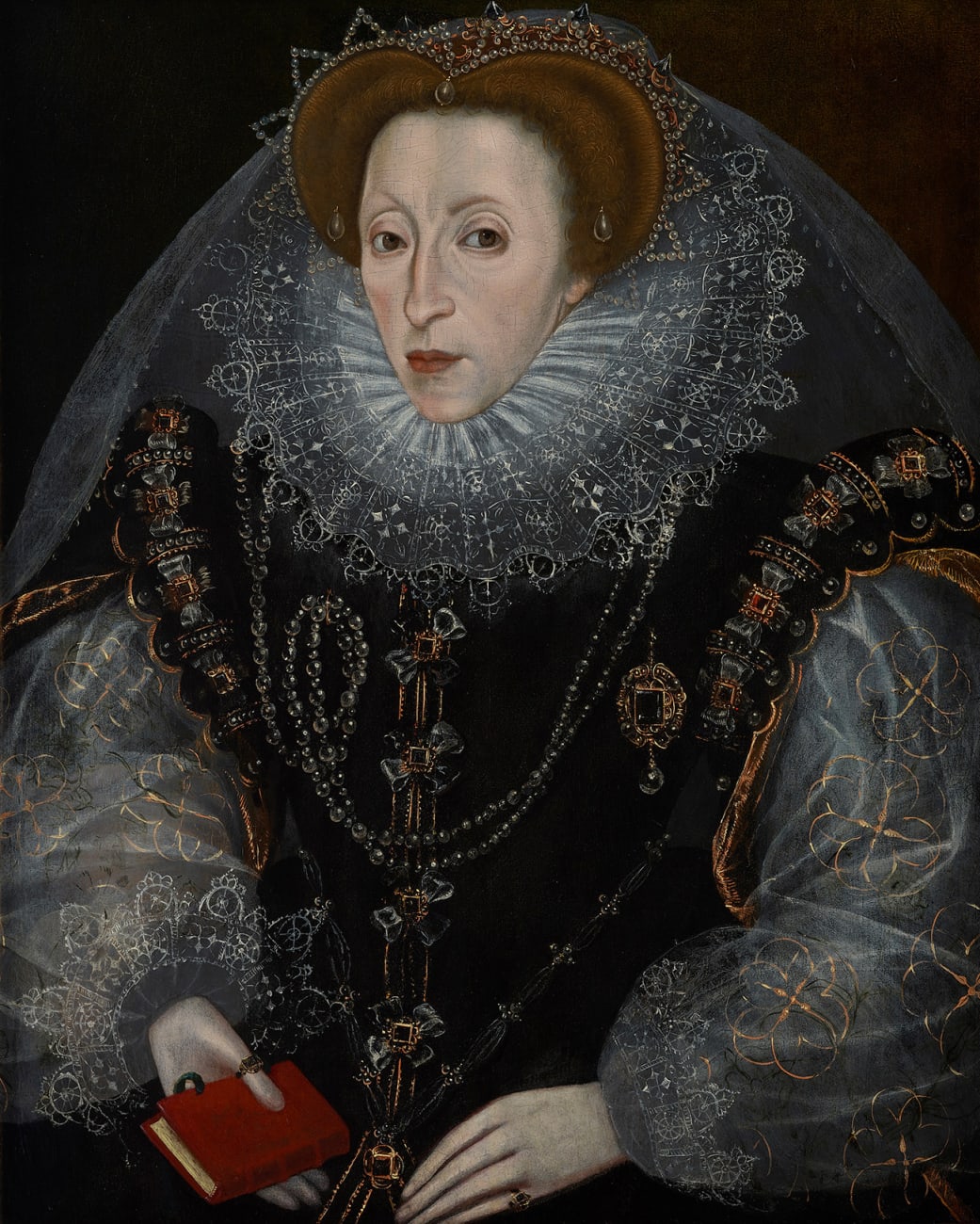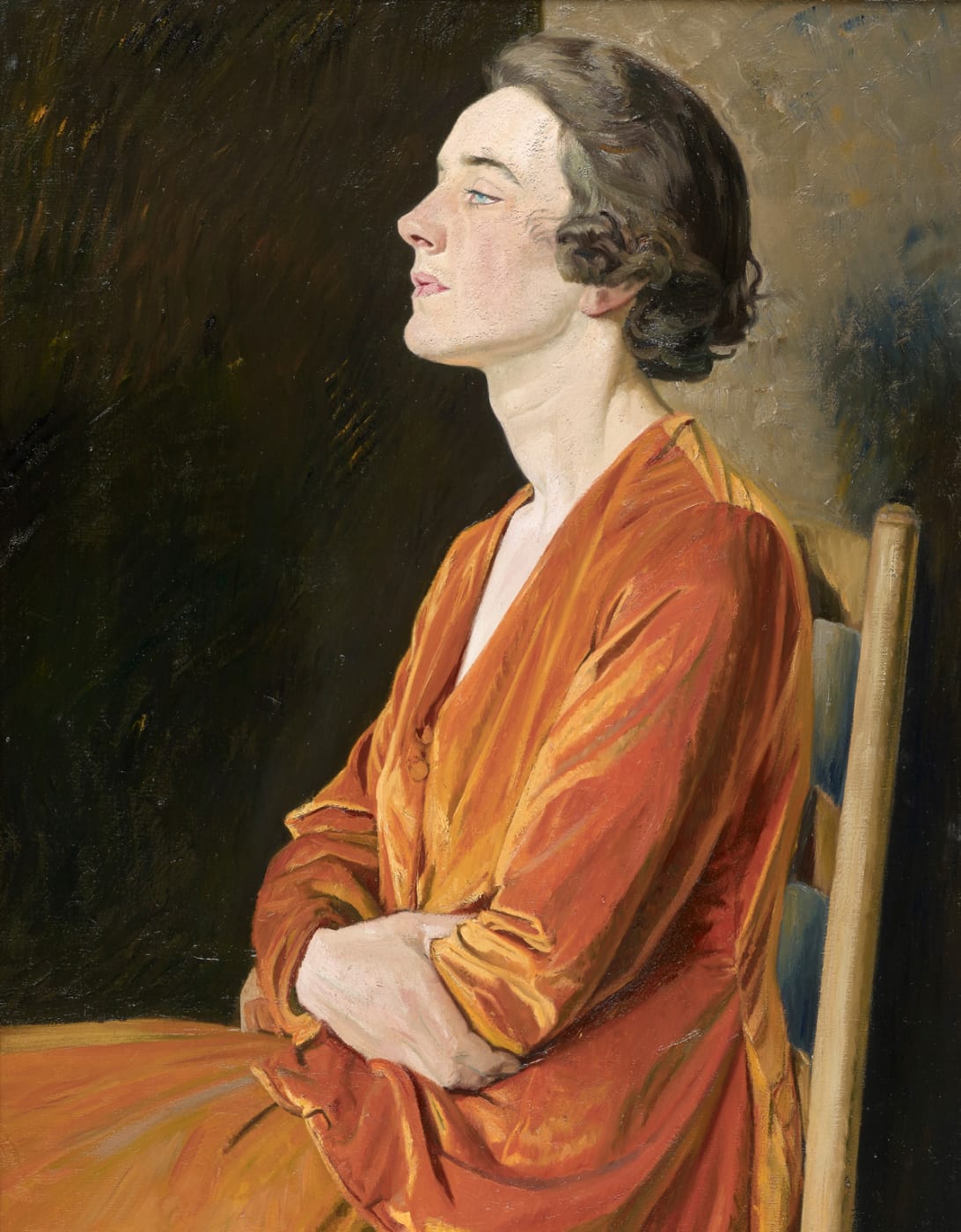Ben Nicholson, September 1961 | Abstraction Unravelled by Annabel Bolton, Gallery Assistant
View the artwork here.
One of the most celebrated artists of the twentieth century, Ben Nicholson's abstraction is as puzzling and mysterious as it is inviting. His austere geometric drawings, paintings and reliefs were indeed among the most influential abstract works in British art, and September 1961, currently with Philip Mould & Company, is no exception.
The ambiguous shapes are not the only abstract components of this seemingly simplistic work: the language of the title is equally evasive of meaning. It naturally refers to the date of the work's creation yet denies further hope of discerning the connotations of the resolutely unfigurative two-dimensional forms. September 1961 was completed while the artist was living in Switzerland and serves as a typical example of the style of his still-life drawings at this time. The term 'still life' might seem counter-intuitive without the knowledge of our still life subject, but it is through unpacking and exploring Nicholson's practice, artistic progression and personal life, that one can hope to better understand his composition. Through employing these tools to scrutinise his seemingly elusive abstraction, the viewer has the potential to empower their own creative spirit. After all, Nicholson himself never spoke of abstractness as a doctrinal issue: he believed that abstract art should be universally viewed and appreciated, by artistic types as well as the general public.
Ben Nicholson was born in 1894 in Denham, Buckinghamshire. The son of the English Impressionist Sir William Nicholson, the young Nicholson was surrounded by art from birth. He briefly attended the Slade School of Fine Art in London between 1910 and 1911 and enjoyed the company of contemporaries such as Stanley Spencer and Paul Nash. According to Nash, with whom he formed a close friendship, Nicholson spent more time during his year at the Slade playing billiards than painting or drawing, since the abstract formality of the green baize (the cloth) and the constantly changing relationships of the balls were, he later claimed, of more appeal to his aesthetic sense. Thus, his artistic education was only brief, and Nicholson became largely self-taught.
It was in 1921, during a trip to Paris, that Nicholson found his true aesthetic identity. In the French capital he was exposed to and artistically awakened by Cubist artworks in the studios of Georges Braque, Constantin Brancusi, and Piet Mondrian, which hugely influenced his first semiabstract still-lives. Indeed, Nicholson's adoption of Mondrian's pure and bold economy of line can be observed in September 1961. e woBy 1924, the British artist had executed his first entirely abstract painting, and from this moment onwards he would continue to be a pioneer for abstract art within the British school: during the 1920s, alongside sculptors Barbara Hepworth and Henry Moore, Nicholson was instrumental in introducing Continental Modernism into English art.
Colour, or often a lack thereof, was extremely important to Nicholson's aesthetic practice, as September 1961 demonstrates. The muted, chalky hues in this work on paper evoke early Italian Renaissance frescoes and shards of classical pottery which indicate Nicholson's keen interest in and response to art history. His love of neutral, pallid tones was also somewhat spiritual, as he once said: 'I have the impression that many people think of colour as 'bright' colour, but what is more beautiful than the natural, 'inner' colour of wood and stone? At any rate there must be available the full range of colour from that of stone or wood to the brightest and most pungent colour imaginable.'
White was of particular significance to Nicholson. Through this colour he connected himself to a sense of purity and a feeling of infinite potential. This purity corresponded to the Purist movement in architecture, championed by Le Corbusier, which pertained to Nicholson's often diagrammatic and mathematical compositions. The connectivity between the colour white and light itself also spoke to the artist, who felt strongly that the interplay between shadows and light was just as important as colour itself. Even here we can see that Nicholson's decision to mount paper onto painted white board affects the way we interpret the colour of the pictorial space, due to the shadows formed by the paper on the board below. This surface variety was a consistent theme throughout Nicholson's oeuvre.
Art historian Norbert Lynton praises the artist's bravery, acknowledging the repressed state of abstract art in Europe and particularly Britain in the late 1930s. Lynton also states that there was 'never an artist less aware of the classes of things' and that it was this freedom that allowed Nicholson 'to become - at times, for varying periods and in various degrees - what we choose to call an abstract artist'.
September 1961 challenges our vision, another theme which was regularly at play in Nicholson's work. Lines cross over each other, looping round to create a sense of a paradoxically empty space, whilst the flat picture plane is made three-dimensional through its floating on a white painted board. This is furthered by the idea that the internal scale of the work is entirely ambiguous; are these empty white spaces colossal slabs of stone or constructivist flowers? The freedom of interpretation that this abstraction engenders seems endless, and with such a seemingly arbitrary title, this potential is only heightened, as such a date would have varying associations for various viewers.
One could certainly argue that such ambiguity lends itself to a sense of romanticism, another significant trope of Nicholson's work. There is a practical and aesthetic, almost natural elegance present in the work which certainly supports this idea. As Nicholson said himself, 'I should be very sorry indeed if my work contained no element of the romantic, as it would be rather like preventing the moon from getting up behind the mountains.'
However one chooses to interpret this fictive troupe of shapes, Nicholson's avant-garde tendencies, spiritual appreciation of form, colour, light, vision and ever-present romanticism, stimulates a liberation to find our own meaning behind this precise moment in September 1961.
View the artwork here.


